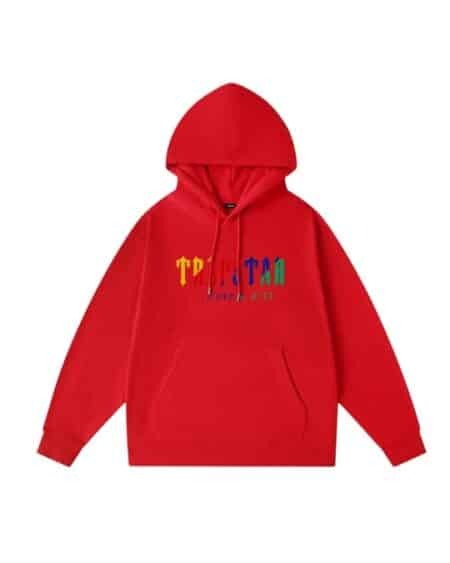Trapstar London: Redefining Women’s Streetwear
Streetwear has historically been male-dominated, often revolving around oversized fits, masculine silhouettes, and male-centric cultural influences. But in recent years, women have reshaped the movement, carving out their own space within urban fashion. Trapstar London has played a key role in this evolution, offering designs and campaigns that embrace women as central figures in streetwear culture. By empowering female voices and redefining women’s fashion, Trapstar is expanding the boundaries of streetwear.
Breaking Gender Barriers in Streetwear
For years, women who loved streetwear often wore pieces designed for men, repurposing oversized hoodies, tees, and tracksuits into personal statements. Trapstar embraced this crossover early on, with designs that appealed to both men and women. Its bold aesthetic, rooted in confidence and rebellion, resonated with women who wanted to project individuality and strength through fashion. This inclusivity helped Trapstar connect with a diverse audience from the start.
Empowerment Through Style
Trapstar clothing empowers women by offering silhouettes and designs that project power, confidence, and authenticity. Jackets, tracksuits, and graphic tees are not tailored to gender stereotypes but instead provide versatile pieces that women adapt to their own style. By refusing to box its designs into “men’s” or “women’s,” Trapstar gives women freedom to express themselves authentically.
Female Icons and Celebrity Influence
High-profile women in music and culture have amplified Trapstar’s influence in women’s streetwear. Celebrities like Rihanna, Rita Ora, and Cardi B have been seen wearing Trapstar, turning it into a statement of empowerment and rebellion. When women in the spotlight wear Trapstar, they redefine how streetwear is perceived—proving that it is not just a male domain but a platform for female strength and creativity.
Streetwear as Female Identity
For many young women, Trapstar represents more than fashion—it’s an identity. Wearing Trapstar is a declaration of belonging to a culture that values ambition, resilience, and creativity. Women who wear the brand align themselves with the same urban energy that fuels music and sports, but they reinterpret it through their own lens. This redefinition broadens the cultural scope of streetwear, making it more inclusive and dynamic.
Campaigns and Representation
Trapstar’s campaigns have increasingly highlighted female representation, showcasing women as central to its cultural narrative. Whether through modeling campaigns, music collaborations, or event appearances, the brand emphasizes that women are not side participants but leaders in the streetwear movement. This visibility inspires young women worldwide to see themselves as active contributors to street culture.
Community and Female Empowerment
Trapstar’s growing female audience has fostered communities where women connect over streetwear, style, and culture. Online platforms, fan groups, and styling content showcase how women reinterpret Trapstar pieces into their own wardrobes. This grassroots engagement reinforces female empowerment, turning Trapstar into a brand that unites women through shared culture and creativity.
The Intersection of Music and Women’s Streetwear
Music has been key to Trapstar’s influence in women’s fashion. Female artists in hip-hop, R&B, and pop have embraced Trapstar as part of their stage presence and personal style. This intersection of music and fashion elevates Trapstar’s visibility while reinforcing its cultural alignment. Women in music wearing Trapstar don’t just wear clothing—they amplify its message of independence, power, and authenticity.
The Future of Women in Trapstar Culture
Looking ahead, Trapstar London has an opportunity to continue shaping women’s streetwear by:
-
Expanding women-focused collections, while maintaining gender-fluid designs.
-
Collaborating with female artists and athletes, spotlighting women as cultural leaders.
-
Launching empowerment campaigns, emphasizing female voices within global street culture.
-
Exploring sustainability with women’s fashion, aligning empowerment with conscious values.
These moves would not only strengthen Trapstar’s connection with women but also push the boundaries of inclusivity in streetwear.
Conclusion
Trapstar London has redefined the role of women in streetwear, transforming what was once a male-dominated space into a more inclusive and empowering culture. By offering bold, versatile designs, embracing female icons, and championing representation, the brand empowers women to express themselves authentically through fashion. Trapstar proves that streetwear is not about gender—it’s about culture, identity, and self-expression. As more women step into the spotlight of urban fashion, Trapstar stands as a brand that celebrates and amplifies their voices.










